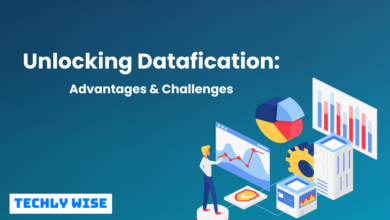
A branch of computer science and artificial intelligence known as machine learning focuses on using data and algorithms to simulate human learning processes and gradually improve accuracy.
IBM has a long history with artificial intelligence. The phrase “machine learning” is said to have been invented by one of its own, Arthur Samuel, through his study of the game of checkers. In 1962, Robert Nealey, a self-proclaimed checkers master, fought against an IBM 7094 computer but lost.
Machine learning-based products, such as Netflix’s recommendation engine and self-driving cars, have been enabled by technological advances in storage and processing capacity over the last few decades.
The Workings of Machine Learning
The three primary components of a machine learning algorithm’s learning system are separated by UC Berkeley.
- A Decision-Making Process
In general, machine learning algorithms are used to make predictions or categorize data. Your algorithm will use some input data which may be labeled or unlabeled to produce an estimate about a pattern in the input data.
- A Function for Errors
An error function can evaluate the model’s accuracy by comparing it to known examples if there are any.
- A Process For Model Optimization
If the model can more accurately fit the data points in the training set, weights are adjusted to reduce the distance between the known example and the model prediction. The algorithm will iterate through this “evaluate and optimize” process, automatically updating weights as needed, until a preset level of accuracy is attained.
Methods For Machine Learning
Machine learning models can be divided into three main groups.
- Unsupervised Machine Learning
Unsupervised learning, also known as unsupervised machine learning, uses machine learning algorithms to examine and categorize unlabeled datasets. These algorithms find data clusters or concealed patterns without a person’s help.
Since this tactic can identify similarities and differences in data, it is useful for exploratory data analysis, cross-selling strategies, consumer segmentation, and picture and pattern identification. Singular value decomposition and principal component analysis are two prevalent techniques for this. Other methods employed include probabilistic clustering techniques, k-means clustering, neural networks, and unsupervised learning.
- Supervised Machine Learning
The process of teaching algorithms to correctly classify data or predict outcomes using labeled datasets is known as “supervised learning,” which is also used to refer to supervised machine learning. To ensure that the model does not fit either too well or too badly, this occurs as part of the cross-validation process.
- Semi-Supervised Learning
Semi-supervised learning offers a nice middle ground between supervised and unsupervised learning. During training with a smaller, labeled data set, it directs classification and feature extraction from a larger, unlabeled data set. It also helps if it costs too much to classify enough data.
Machine Learning Algorithms
These consist of:
- Neural Networks
The operation of neural networks, which consist of a huge number of interconnected processing nodes, is similar to that of the human brain. The ability of neural networks to recognize patterns is useful for a variety of tasks, including natural language translation, image production, image recognition, and speech recognition.
- Regression Linear
This method is employed to forecast numerical values and is based on a linear relationship between distinct quantities.
- Clustering
Through unsupervised learning, clustering algorithms can identify patterns in data to group them. Data scientists benefit from computers’ ability to spot distinctions between data points that humans have missed.
- Decision-trees
Decision trees can be used to forecast numerical values as well as categorize data into categories. A tree diagram can be used to show the connected decision branches that are utilized in decision trees. One advantage of decision trees is that they are easy to validate and audit in comparison to the “black box” of neural networks.
- Logistic Regression
Predictions for categorical response variables, such as “yes/no” responses to questions, are made by this supervised learning technique. Applications for it include providing quality control on a production line and classifying spam.
- Rough Forests
The machine learning method combines the results from numerous decision trees into a random forest to forecast a value or category.
Examples of Machine Learning
- Speech Recognition
is a capability that employs natural language processing (NLP) to translate human speech into a written format. Speech recognition is a common feature on mobile devices, whether it’s for voice searches like Siri or to make text more accessible.
- Computer Vision
Computers can now extract useful information from digital photos, movies, and other visual inputs using artificial intelligence technology, and they may subsequently take the necessary action. For self-driving cars in the automotive industry, radiological imaging in healthcare, and photo tagging on social media, computer vision employs convolutional neural networks.
- Customer Service
Customer service: Online chatbots are replacing human agents across the customer experience, altering how we think about consumer involvement on websites and social media platforms. Chatbots respond to frequently asked concerns about matters like shipping or can give customers individualized advice, such as cross-selling products or advising sizes.
- Trading Stocks Automatically
AI-driven high-frequency trading platforms execute hundreds or even millions of deals per day without the need for human participation to optimize stock portfolios.
- Detecting Fraud
Banks and other financial organizations can employ machine learning to spot fraudulent activities. Through supervised learning, a model can be trained using information about transactions that have been identified as fraudulent.
Machine Learning’s Challenges
We now live in a better world thanks to the development of machine learning technologies. However, the application of machine learning in business has raised some moral concerns about the advancements in AI. A few of these are:
Singularity of Technology
Even though there is a lot of public interest in this topic, not all researchers are concerned about the possibility of AI surpassing human intelligence in the future. Superintelligence or strong AI are additional names for technological singularity. According to philosopher Nick Bostrum, superintelligence is “any intellect that significantly outperforms the best human brains in practically every field, including scientific creativity, social skills, and general wisdom.”
Who would be held responsible if a driverless automobile got into an accident, even though that would be unreasonable to think would happen? Should we continue to develop autonomous vehicles, or should we stop at semi-autonomous vehicles that aid in safe driving? Although the verdict is still out on this, ethical discussions of this nature are taking place as cutting-edge AI technology advances.
Job Effects of AI
While the loss of jobs is a major concern for the public when it comes to AI, this concern should probably be reframed. Every innovative, disruptive technology affects how much demand there is for particular job roles in the market. Consider the auto industry, where some producers, like GM, are focusing more on the creation of electric vehicles to support environmental measures. The energy industry is still present, but it is shifting from a gasoline economy to an electric one.
The demand for labor will similarly move to other industries as a result of artificial intelligence. AI systems will require human management assistance. The biggest challenge with AI and its effects on the labor market will be helping workers move to new, in-demand professions.
Privacy
Talking about privacy typically brings up the subjects of data protection, privacy, and data security. These concerns have helped policymakers in recent years advance. Such legislation has compelled businesses to reconsider how they handle the storage and use of personally identifiable information (PII). As a result, businesses are making security investments a higher priority as they try to close any gaps or openings for hacking, monitoring, and cyberattacks.
Accountability
The usage of AI is not heavily regulated, and as a result, there is little of an enforcement structure in place to ensure that it is utilized morally. The existing incentives for corporations to uphold moral standards derive from the financial costs of an unethical AI system. Ethical frameworks have emerged to regulate the development and spread of AI models within society as a result of the cooperation between ethicists and researchers. But at the moment, they only act as guidelines. According to some research, it is difficult to keep society safe when there is a lack of foresight into probable effects and divided responsibilities (link lives outside IBM) (PDF, 1 MB).
Advantages of Machine Learning
- Improvement Scope
Machine Learning is a rapidly expanding field. It has numerous prospects for advancement and has the potential to become the leading technology in the future. This technology is seeing a lot of research and innovation, which helps to improve software and hardware.
- Improved Online Shopping Experience and Quality Education
Machine Learning will be widely applied in the education industry, enhancing the quality of instruction and the student experience. Machine learning has emerged in China, and it has enhanced student attentiveness. In the world of e-commerce, Machine Learning analyses your search stream and makes recommendations based on it. It sends tailored adverts and notifications to users based on their search and browsing history.
- Automation
One of the driving forces behind automation is machine learning, which is reducing time and human workload. Automation is now prevalent, and the complicated algorithm does all of the work for the user. Automation is more dependable, efficient, and timely. This powerful computer can now handle a variety of machine-learning models and complicated algorithms.
Disadvantages of Machine Learning
In the world, nothing is flawless. More serious than human errors, machine learning has several serious flaws.
Data Gathering
Finding good data is important to machine learning as a concept. Without a reliable data source, the result will be wrong. Also important is the data’s quality. Wait for more high-quality data if the user or institution requests it. As a result, the quantity and quality of the data are crucial to machine learning.
Resources and Timing
The amount and diversity of the data that machines process continues to be enormous. Machines need time so that their algorithm can adapt to and learn about the surroundings.
High Probability of Error
The error made during the early phases is massive, and if not remedied at that time, it causes disaster. Bias and wrongdoing must be dealt with separately; they are unrelated. Machine learning is dependent on two factors: data and algorithms. Any errors in any variables would have a significant impact on the output.
Development and Research
The concept of machine learning is expanding. There have been no substantial innovations in this field that have completely revolutionized any economic sector.
Social Transformations
Machine learning is causing a slew of social shifts. The importance of machine learning-based technologies in society has grown exponentially. It is impacting society’s cognitive process and causing unintended consequences. Character assassination and sensitive facts are tearing at society’s social fabric.
Interpretations of Results
One of the main benefits of machine learning is that the interpreted data we obtain from it can never be completely accurate. It will be inaccurate to some extent.
Very Expensive
This program is incredibly expensive, and not everyone can afford it. Government agencies, huge commercial firms, and businesses own the majority of it.
Concerns About Privacy
Data, as we all know, is one of the pillars of machine learning. Data collecting has raised the fundamental issue of privacy. The collection and use of data for commercial reasons has long been a source of contention. The Supreme Court of India has decided that privacy is a fundamental right of Indians. However, many cases have emerged in which large corporations collect data without the user’s knowledge and use it for their purposes.




